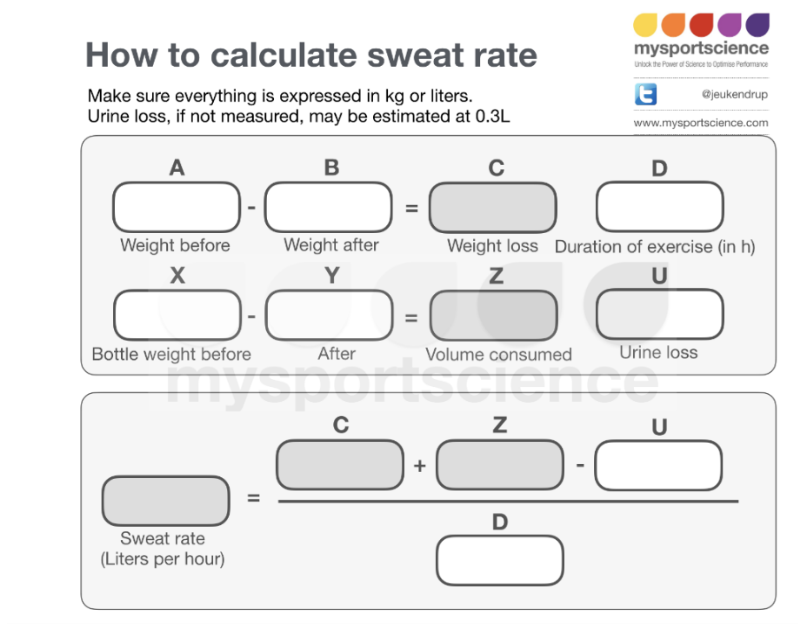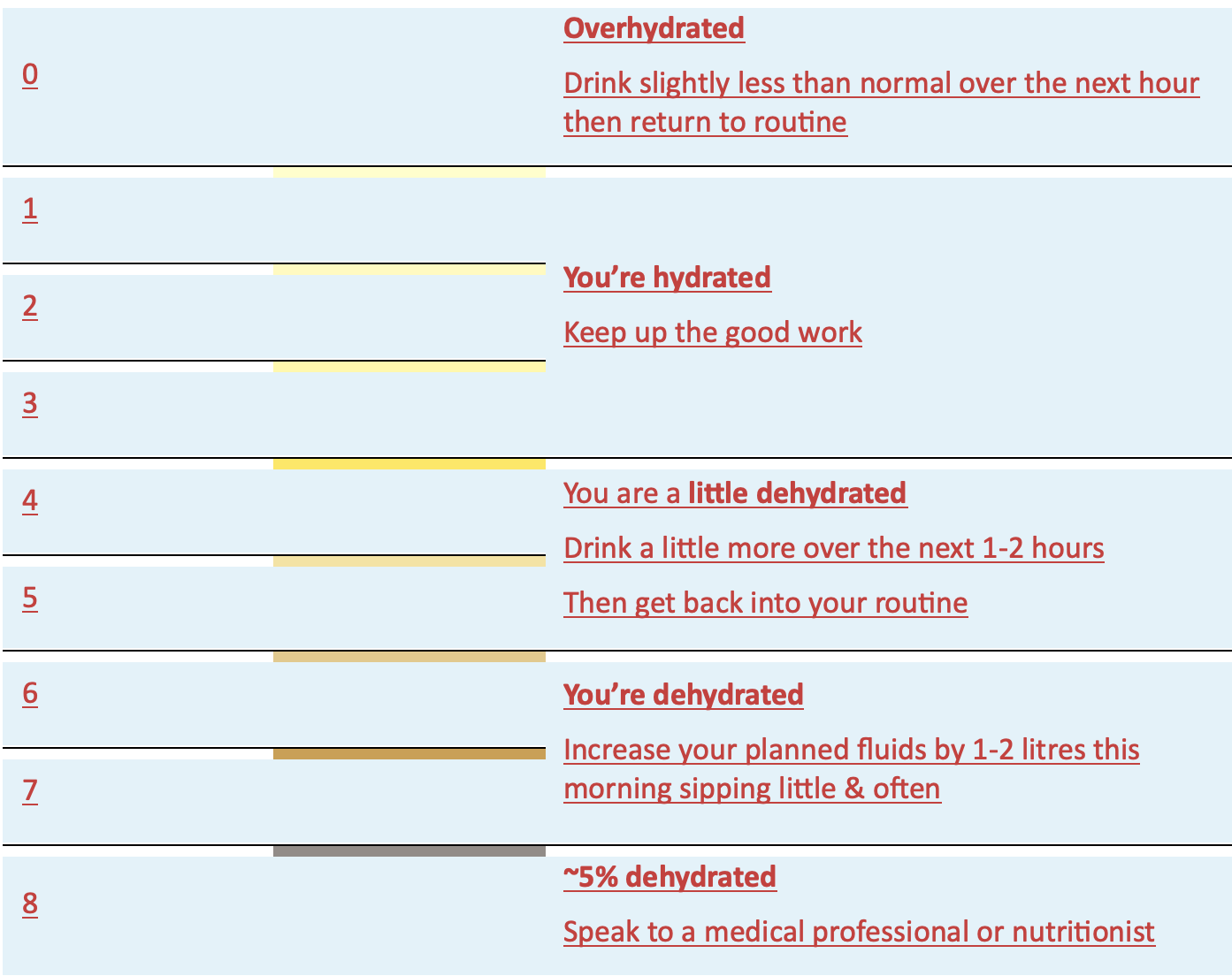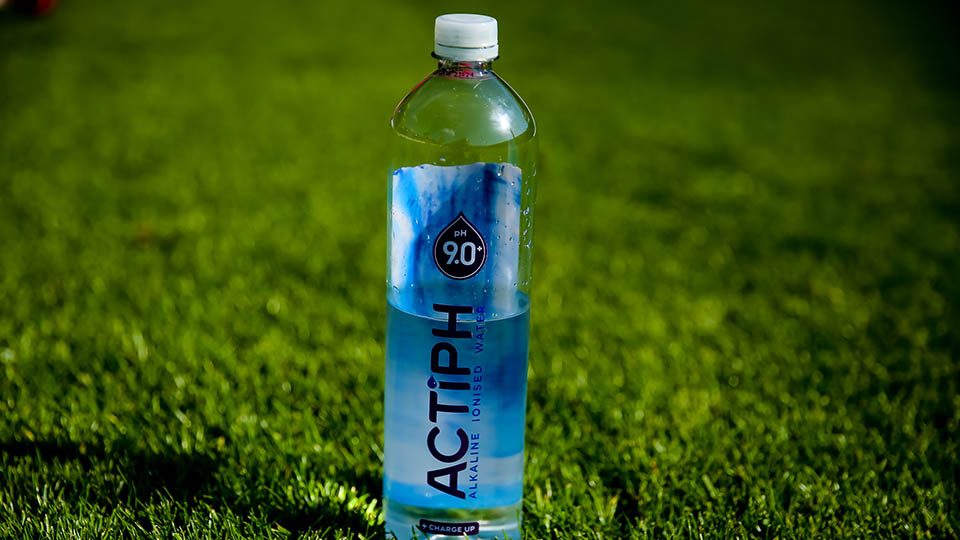Sweating is the human body’s way of preventing overheating through evaporative cooling. Whilst this function is crucial to our body’s thermoregulation, it is also our biggest source of fluid and electrolyte loss.
When exercising in the heat, an increased sweat rate can lead to large fluid losses particularly if you’re a heavy sweater. There are many factors which influence how much we sweat including the intensity of exercise, how fast you run or how much power you are generating, the environment (temperature, humidity and wind speed), clothing, acclimation and training status, and genetics. The key takeaway here is that how much you sweat is highly individual, so the first easy step you can take towards optimising your hydration is to find out how much you are sweating.
So how can you work out your individual hydration requirements?
Firstly, you can calculate your individual sweat rate and use this to assess your hydration status post-exercise. This is easy to determine through tracking your fluid intake and changes in body mass when exercising.
Prior to exercise you will need to record a nude bodyweight, and the weight of your food and drink that you plan to take with you. Whilst exercising keep hold of all your food wrappers and banana skins etc. to weigh afterwards. You will also need to record a nude bodyweight post-exercise, to work out your change in body mass.
Follow this guide to work out your sweat rate:
Prior to exercise:
- Record nude bodyweight
- Record weight of all food and fluid
During exercise:
- Keep hold of all empty bottles, food wrappers and banana skins etc.
- Record duration of exercise
Post exercise:
- Record nude bodyweight again
- record weight if remaining fluid, food, wrappers, skins etc.
- Use the formula in diagram below to calculate sweat rate:

Image from Asker Jeukendrup, 'How much do you Sweat?', MySportScience
It is recommended that you drink 1.5 times your net fluid loss to rehydrate post exercise. So, if you lost 1L of sweat, you should drink 1.5L of fluid over the next few hours to rehydrate. Small amounts of dehydration likely won’t be harmful; however, studies have shown that changes in body mass >2% can have negative effects on athletic performance.
How can I monitor my hydration status?
Whilst calculating your sweat rate may be useful for informing hydration around exercise sessions, there are also other methods of monitoring hydration status that do not require a measurement of body mass. It’s important to consider whether knowing/weighing your body mass may be detrimental to your wellbeing by causing you stress or affecting your eating habits. If it might, avoid measuring your body mass and use alternative measures to monitor your hydration status. Organisations such as First Steps and Beat can provide you with support and information if you are struggling with eating related issues and/or your perception of your body composition.
You can monitor your hydration status without needing to weigh your body mass, by looking at the colour of your urine first thing in the morning and being vigilant for physical symptoms of dehydration. The below chart indicates what your urine colour might mean and what steps you can take to optimise your hydration status:

Furthermore, if you are experiencing any of the following symptoms you may be dehydrated, therefore you should increase your fluid intake and sip little and often over the next 1-2 hours:
- Feeling thirsty
- Headache
- Dry mouth and lips
- Struggling to concentrate
- Feeling tired
- Peeing less often than usual
- Dark and strong-smelling urine
What should you actually be drinking?
Sports drinks and electrolytes are a popular choice for staying hydrated during and after exercise. These ‘electrolytes’ refer to essential minerals such as sodium, calcium and potassium that are dissolved in water, which by definition means that they have the potential to conduct an electric current. Sodium, potassium, and chloride are the electrolytes with the highest concentrations found in bodily fluids, however these losses are relatively small, and it is likely that they can be replaced through your usual dietary intake. Having said this, athletes undertaking ultra-endurance events where they maintain a high sweat rate for a prolonged duration are likely to experience more significant sodium and electrolyte losses so should pay more attention to replacing them. Targeted sodium replacement is not usually necessary unless athletes are exercising for over 4hrs with large sweat sodium losses (>1g/L) whilst also drinking to replace >70% of their sweat losses. In this case sweat sodium testing can provide an important extra componentto your hydration strategy, but for the majority of athletes targeted replacement and precise hydration strategies are not necessary.
It is important to understand that the concentration of electrolytes in sweat is always lower than the concentration in the blood. This means that water is lost much faster than electrolytes and so replacing lost fluid in sweat should be the main priority when it comes to rehydration.
The replacement of fluid and electrolytes in the body is often limited by the body’s ability to retain the ingested fluid. Studies have shown that fluid retention is largely determined by the solute content of the beverage, these solutes include electrolytes such as sodium, carbohydrates, and protein. Therefore, drinks that contain a combination of electrolytes, carbohydrates and protein are more effective in rehydrating you compared to water. The best examples of this include drinks such as milk, milkshakes, or protein shakes. Other good options would be fruit juice, sports drinks, and electrolyte tablets. Rehydration with these types of beverages has shown to result in reduced urine formation, and greater blood volume restoration. The bottom line is that water definitely is not the best option when it comes to rehydration, particularly after heavy sweating.
With all this information in mind, you can now personalise your own hydration strategy to help you reach your performance goals this summer. For those undertaking events in more extreme environments, here at Loughborough Sport we can replicate the conditions of your event in our environmental chamber to help you understand how you sweat in race specific conditions. This will allow you to refine your race hydration strategies through sweat rate testing and sweat sodium concentration testing. Click here to find out more information.
Written by Lois Fileman
